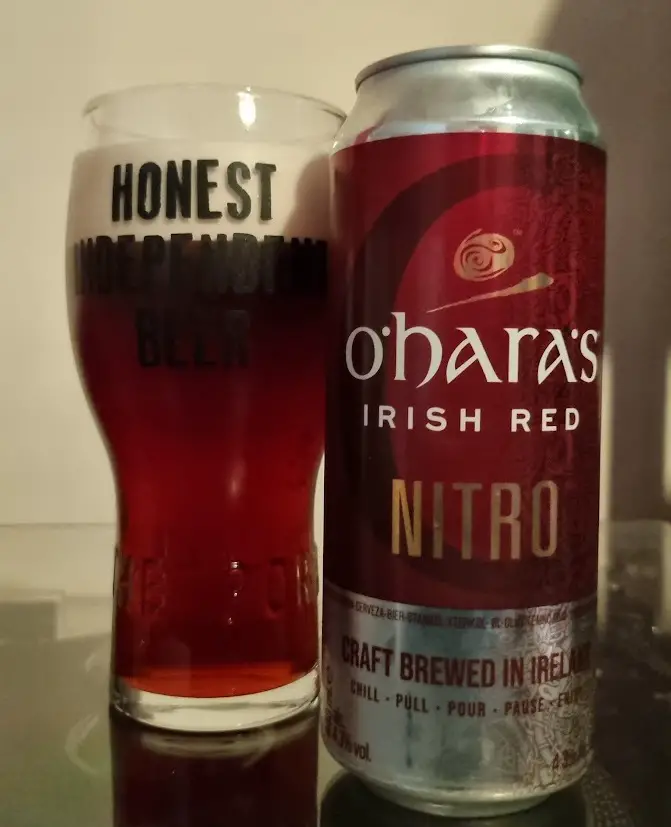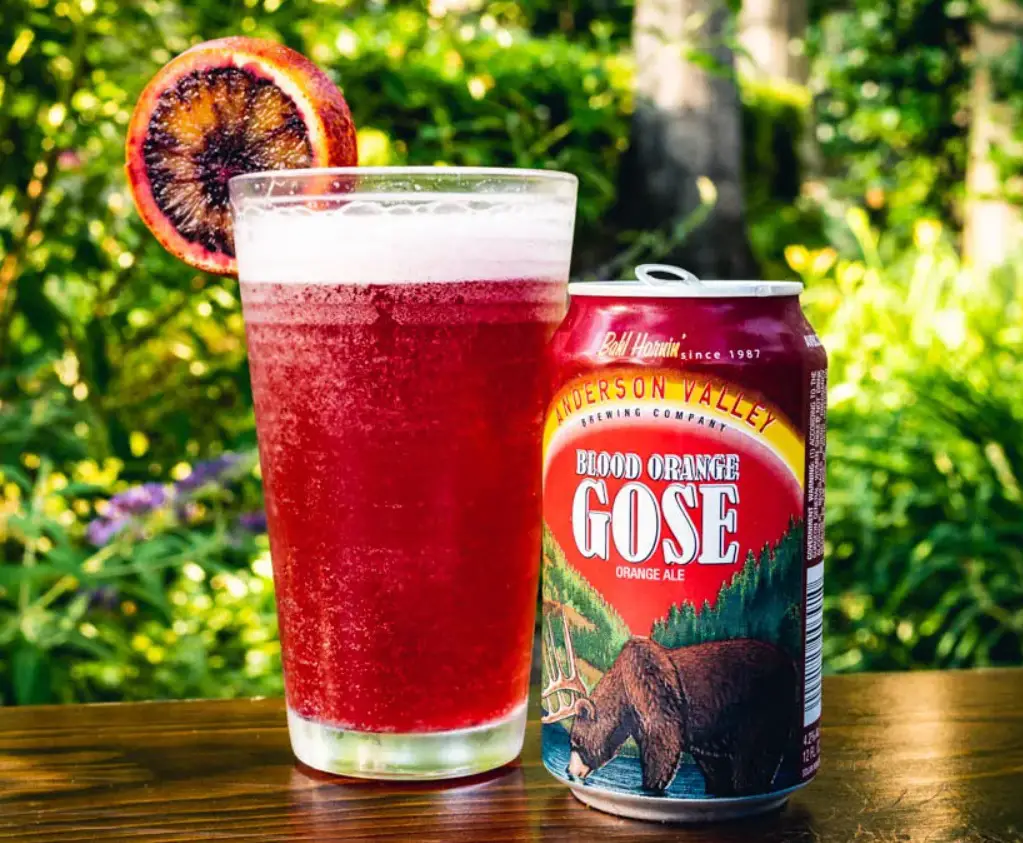Gose Beers – The Ultimate Guide!
While exploring different beer varieties, you may have come across Gose beer, a type that stands out for its distinctive flavor. Its unique taste likely caught your attention, leading you to our article. Here, we’ll explore the questions: “What is Gose beer?” and “How is it made?”
For those unfamiliar, Gose (pronounced ‘goes-uh’) is a pale wheat beer made special by two key ingredients: salt and coriander. Its tart flavor comes from lactic acid, produced during fermentation with lactobacillus bacteria, which gives the beer its sharp, crisp character.

A Brief History Of Gose Beer
Gose beer originated in the town of Goslar, Germany, in the early 16th century. Named after the Gose River, this beer was initially brewed using the local, mineral-rich water, which gave it a naturally salty flavor. Over time, Gose became popular in nearby Leipzig, where it was embraced as a regional specialty.
Despite its popularity, Gose production nearly disappeared in the mid-20th century due to war and changing tastes. However, it saw a revival in the late 20th and early 21st centuries, as craft breweries around the world rediscovered and embraced this unique, tart, and refreshing beer style.

How Is Gose Beer Made?
Gose beer is made using a brewing process that distinguishes it from most other beer styles due to its unique ingredients and fermentation method. The base of Gose is typically a blend of malted barley and wheat, giving the beer its pale color and smooth mouthfeel. The wheat adds a slight haze to the beer and contributes to its light, refreshing body. Water, hops, and yeast are also standard ingredients, but what sets Gose apart are the additions of salt and coriander, which give the beer its distinctive taste.
The fermentation process for Gose uses a technique known as kettle souring. After the initial brewing, lactobacillus bacteria are introduced into the wort (unfermented beer). These bacteria are responsible for producing lactic acid, which gives Gose its signature tartness. The souring process usually takes place in the kettle over a period of hours or days, depending on the desired level of acidity. This step imparts the sharp, tangy flavors that define the beer, contrasting with the saltiness and herbal notes from the coriander.
Once the desired level of sourness is reached, the wort is boiled to kill off the lactobacillus bacteria. Hops, though used sparingly in Gose to avoid excessive bitterness, are added at this stage for balance. The beer is then cooled and transferred to fermenters, where yeast is introduced for the final fermentation. This fermentation lasts for a few weeks, allowing the yeast to convert sugars into alcohol and further develop the beer’s flavor profile.
Finally, the beer is either bottle-conditioned or kegged for serving. The resulting product is a tart, slightly salty, and often effervescent beer with a crisp, refreshing finish. Gose’s combination of sour, salty, and subtly spiced flavors makes it a distinctive and popular choice among fans of sour beers.

What Gose Beers Are Out There?
Here’s a list of various types of Gose beers, each offering unique characteristics in terms of flavor, origin, and ABV (alcohol by volume):
1. Leipziger Gose
- Origin: Leipzig, Germany
- ABV: 4.5%
- Description: This is one of the classic Gose styles from the town where the beer was popularized. Leipziger Gose is known for its balanced tartness with a mild salinity and the subtle herbal spice of coriander. It has a crisp and refreshing finish, often served in distinctive bulbous glassware.
2. Anderson Valley Brewing Company – The Kimmie, The Yink & The Holy Gose
- Origin: California, USA
- ABV: 4.2%
- Description: A West Coast twist on the traditional Gose, this beer combines tart, citrusy notes with a slight saltiness. It’s brewed with a wheat base and enhanced with coriander and sea salt, providing a smooth and balanced flavor. The brewery has a series of Gose variations that include flavors like blood orange and watermelon.
3. Westbrook Brewing Co. – Gose
- Origin: South Carolina, USA
- ABV: 4%
- Description: Westbrook’s Gose is known for its sharp, tangy flavor, featuring a punch of sourness alongside a touch of salt and coriander. With a light and crisp finish, it’s a great entry point for those new to sour beers. Westbrook has also created many fruit-infused versions, such as Key Lime Pie and Mango Gose.
4. The Lost Abbey – Carnevale
- Origin: California, USA
- ABV: 6.5%
- Description: A slightly stronger Gose with a higher ABV, Carnevale mixes the traditional sour and salty notes with hints of tropical fruit, coming from the yeast strains used in fermentation. It’s a great example of how American craft breweries have experimented with the Gose style by adding bold, fruity flavors.
5. Sierra Nevada – Otra Vez
- Origin: California, USA
- ABV: 4.5%
- Description: Otra Vez is a modern American Gose brewed with cactus and grapefruit, offering a distinctive fruity twist. Its tartness is balanced by the light salinity from the traditional Gose style, but the addition of prickly pear cactus gives it a unique, slightly sweet and earthy flavor.
6. Fruited Gose (Various Breweries)
- Origin: Worldwide
- ABV: Varies (3.5%-5%)
- Description: Many craft breweries across the world have embraced the trend of adding fruits to Gose beers. Common fruits include raspberry, blackberry, passion fruit, and guava. These fruited Goses amplify the natural tartness of the style while introducing bright, juicy flavors. Popular examples come from breweries like Omnipollo (Sweden) and Collective Arts (Canada).
7. North Coast Brewing Co. – Passion Fruit-Peach Gose
- Origin: California, USA
- ABV: 4.3%
- Description: This Gose combines the tropical notes of passion fruit with the sweetness of peach. The resulting beer is slightly tart, lightly salty, and brimming with juicy fruit flavors, making it a refreshing option for warm weather.
8. Goose Island – Sofie
- Origin: Illinois, USA
- ABV: 6.5%
- Description: While Sofie is technically more of a farmhouse ale, it has characteristics similar to a Gose, with its light tartness and subtle citrus flavors. It’s aged in wine barrels, which imparts a complex, slightly funky character, making it a standout among modern sour beers.
9. To Øl – Gose to Hollywood
- Origin: Denmark
- ABV: 3.8%
- Description: This Danish Gose takes a fun, citrusy spin by adding oranges into the brewing process. The result is a tart, juicy beer with a bright orange flavor, balanced by the classic salty undertones of the Gose style. The beer’s name is a playful nod to its West Coast inspiration.
10. Brasserie Dupont – Gose 4.5
- Origin: Belgium
- ABV: 4.5%
- Description: Known for their traditional Belgian ales, Brasserie Dupont took a step into the sour beer world with this Gose. Combining Belgian yeast complexity with the salt and tartness of a Gose, this beer offers a rich and nuanced flavor profile, blending sour and spicy notes.
Each of these Gose beers showcases a unique twist on the traditional recipe, with variations in fruit infusions, yeast strains, and brewing techniques, but all retain the core elements of tartness, salt, and coriander that define this historic style.

Pairing Gose Beers
Serving Gose Beer
Gose beers are best served cold, typically between 45–50°F (7–10°C), to bring out their crisp, refreshing qualities without muting the subtle complexity of their flavors. They are often poured into a tall, narrow glass or a stemmed goblet, which helps concentrate the aromas while maintaining the beer’s effervescence. The bright acidity and light body make Gose an ideal summer or warm-weather beer, though its versatility allows it to be enjoyed year-round. The natural carbonation of Gose also adds a refreshing sparkle that enhances its appeal.
Pairing Gose Beer
Thanks to its unique flavor profile—salty, tart, and slightly spicy—Gose pairs exceptionally well with a variety of foods. Here are some pairing ideas to highlight the best of Gose beer:
1. Seafood
- Why it works: The subtle salinity and citrusy tartness of Gose complement the flavors of seafood dishes, especially oysters, shrimp, ceviche, or grilled fish. The beer’s crisp finish cuts through rich or oily textures while enhancing the briny quality of the seafood.
- Pairing examples: Oysters on the half shell, smoked salmon, ceviche, or fish tacos.
2. Salads and Light Greens
- Why it works: The refreshing acidity of Gose is an excellent match for light, citrus-based salads or dishes with fresh greens. It can complement vinaigrettes and bring out the brightness of fresh herbs and fruits.
- Pairing examples: Arugula salad with citrus dressing, spinach and goat cheese salad, or a quinoa salad with fruit.
3. Spicy Foods
- Why it works: The tart, slightly salty nature of Gose acts as a palate cleanser against the heat of spicy dishes. Its acidity helps to temper the spiciness without overwhelming the dish, making it a great companion for Mexican, Thai, or Indian cuisine.
- Pairing examples: Tacos with salsa verde, spicy curry dishes, or buffalo wings.
4. Cheese
- Why it works: Gose’s tanginess pairs beautifully with tangy, creamy cheeses, especially those with a bit of funk or saltiness. Soft cheeses like goat cheese or brie work well, as do sharper cheeses such as feta or blue cheese. The tart and salty notes of the beer contrast nicely with the richness of the cheese.
- Pairing examples: Goat cheese with honey, feta on a salad, or a blue cheese and fig pairing.
5. Pickled and Fermented Foods
- Why it works: Fermented foods like pickles, sauerkraut, or kimchi have natural acidity that matches well with the tartness of Gose. The saltiness of both the beer and the fermented foods plays off each other, creating a harmonious pairing.
- Pairing examples: Charcuterie boards with pickles, kimchi fried rice, or a pastrami sandwich with sauerkraut.
6. Fruity Desserts
- Why it works: The tangy, zesty quality of Gose complements the sweetness and acidity of fruit-based desserts. It balances sweetness with a tart finish, enhancing the natural fruit flavors without making the dessert overly rich.
- Pairing examples: Lemon tart, berry cobbler, or a fruit sorbet.
7. Charcuterie and Light Meats
- Why it works: The saltiness of Gose pairs well with cured meats like prosciutto, salami, or other charcuterie, where the beer’s acidity cuts through the fat. Light meats like grilled chicken or pork also benefit from Gose’s crisp and tangy profile, which adds a refreshing contrast.
- Pairing examples: Prosciutto with melon, grilled chicken with herbs, or a charcuterie board with salami and pickles.
General Pairing Tip
Gose’s defining features—salinity, tartness, and spice—lend themselves to pairing with foods that either contrast its flavor or enhance it through complementary tastes. Look for dishes with bright, acidic, or spicy elements, and avoid overly heavy or sweet foods that could overwhelm Gose’s light, refreshing character. With its vibrant flavor profile, Gose elevates many dishes, especially those with bold or tangy flavors, making it a versatile and exciting beer to pair with food.
Wrapping It Up
In conclusion, Gose beer stands out as a unique and versatile style, known for its refreshing tartness, subtle salinity, and light spice. Its distinctive flavor profile makes it perfect for pairing with a wide variety of foods, from seafood and spicy dishes to fruity desserts and cheeses. Whether enjoyed on its own or as part of a meal, Gose offers a refreshing and flavorful experience that continues to captivate beer enthusiasts around the world.

I am a young architect with a passion that goes beyond blueprints… it’s beer! undertherosebrewing.com is more than just a blog, it’s a manifestation of my lifelong dream to explore, read, and learn everything about beer. Join the blog on this unfiltered and genuine adventure into the heart of beer culture. Cheers!






